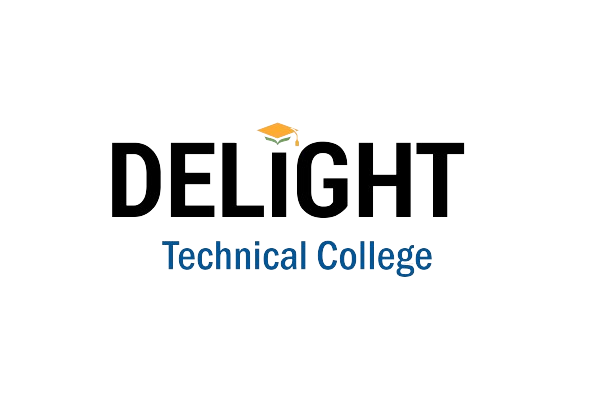10 Common Sewing Mistakes and How to Fix Them Like a Pro

Creating custom patterns ensures a perfect fit for your clients, enhancing comfort, style, and professionalism. Whether you’re a tailor or fashion designer, mastering pattern-making allows you to create unique, personalized garments.
Here’s a step-by-step guide to creating custom patterns from scratch!
Step 1: Take Accurate Body Measurements
Precision is key when drafting custom patterns. Always measure your client carefully.
📏 Essential Measurements:
✅ Bust/Chest – Around the fullest part.
✅ Waist – At the narrowest part of the torso.
✅ Hips – At the widest part of the hips.
✅ Shoulder Width – From one shoulder bone to the other.
✅ Arm Length – From shoulder to wrist.
✅ Back Length – From nape (neck base) to waist.
✅ Inseam (for trousers) – From crotch to ankle.
💡 Tip: Have your client stand naturally while measuring, and record all figures carefully.
Step 2: Choose the Right Pattern-Making Method
There are three common ways to create custom patterns:
📝 Pattern-Making Methods:
1️⃣ Drafting from Scratch – Using measurements to create a pattern.
2️⃣ Draping on a Dress Form – Pinning fabric on a mannequin and shaping it.
3️⃣ Modifying an Existing Pattern – Adjusting a standard pattern to fit custom sizes.
💡 Tip: For a truly unique fit, drafting from scratch is the best option.
Step 3: Gather Pattern-Making Tools
Before drafting, make sure you have the necessary tools.
🧵 Essential Tools:
✅ Pattern paper (manila, kraft, or tracing paper)
✅ Measuring tape
✅ Tailor’s chalk or pencil
✅ Ruler and French curve
✅ Scissors (paper and fabric)
✅ Notcher and awl (for marking points)
✅ Pins and weights
💡 Tip: Use pattern weights to keep paper steady while drafting.
Step 4: Draft the Basic Pattern (Block/Sloper)
A block (sloper) is a basic pattern that serves as a foundation for various styles.
Basic Pattern Blocks:
🔹 Bodice Block – For tops, blouses, and dresses.
🔹 Skirt Block – For skirts and dress bottoms.
🔹 Trouser Block – For pants and jumpsuits.
🔹 Sleeve Block – To attach to bodices.
How to Draft a Bodice Block:
1️ Draw a vertical line for the center front/back.
2️ Mark key points: bust, waist, hip, and shoulder.
3️ Use straight and curved lines to shape the bodice.
4️ Include dart placement for shaping.
5️ Add seam allowances (usually 1.5 cm).
💡 Tip: Always label your pattern pieces (front bodice, back bodice, sleeve, etc.).
Step 5: Create Pattern Variations for Different Styles
Once the basic block is ready, you can modify it to create various designs.
✂️ Pattern Modifications:
✅ Adding Darts & Princess Seams – Enhances shape.
✅ Adjusting Necklines & Sleeves – Creates unique looks.
✅ Expanding or Tapering – To make looser or fitted designs.
✅ Adding Pleats, Gathers, or Panels – For decorative effects.
💡 Tip: Always test modifications on a muslin fabric before finalizing.
Step 6: Test the Pattern with a Muslin Prototype
Before cutting expensive fabric, make a test garment (toile) using muslin or cheap cotton.
🧵 Why Test with Muslin?
✅ Identifies fit issues before cutting final fabric.
✅ Allows for adjustments without wasting material.
✅ Helps clients visualize the final garment.
💡 Tip: Pin or baste the muslin together, have your client try it on, and mark any adjustments needed.
Step 7: Finalize & Cut the Pattern in Fabric
Once adjustments are made, the final pattern is ready for cutting.
📌 Finalizing the Pattern:
✅ Transfer all markings (darts, grainlines, notches).
✅ True the seams (ensure smooth curves and straight lines).
✅ Double-check measurements before cutting fabric.
💡 Tip: Always cut on the correct grainline to maintain fabric drape.
Step 8: Sew the Garment & Make Final Adjustments
Now, assemble the garment using the final fabric.
🔹 Sewing Process:
✅ Baste the pieces together and check the fit.
✅ Make final adjustments (tighten, loosen, reshape if needed).
✅ Use proper finishing techniques (serging, bias binding, or hemming).
💡 Tip: Take a final fitting with your client before completing the garment.
Step 9: Store & Reuse the Custom Pattern
Once the final garment fits perfectly, store the pattern for future use.
📂 Pattern Storage Tips:
✅ Label the pattern with client’s name, date, and measurements.
✅ Store in a folder or pattern hanger.
✅ Keep a digital copy by tracing or scanning the pattern.
💡 Tip: A well-organized pattern library saves time when making repeat orders.
Final Thoughts: Master the Art of Custom Pattern-Making!
Creating custom patterns allows you to offer personalized services and stand out as a fashion designer or tailor. With practice, you’ll develop skills to draft, modify, and perfect patterns for any body type.
🎓 Want to Learn Professional Pattern-Making?
Join Delight Tailoring Fashion & Design School for hands-on training in pattern drafting, garment construction, and fashion design.
📞 Call: +254 722 533 771 / +254 724 566 088
🌐 Visit: delight.ac.ke for more details.
🚀 Start designing perfectly tailored garments today! 🧵✂️👗



